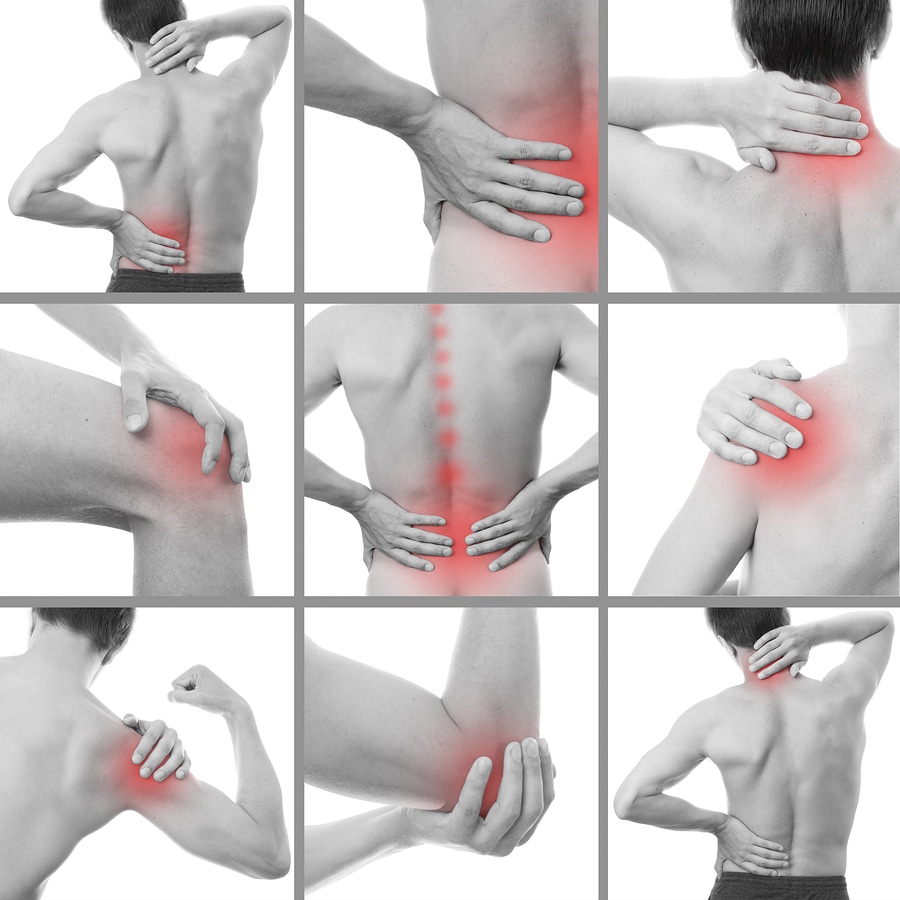Do you ever feel like your joints are creaking and groaning along with the changing weather? If so, you’re not alone. Many people with arthritis find that their symptoms fluctuate with the weather.
But why does this happen? In this article, we will explore the fascinating connection between arthritis and weather, uncovering the real reasons behind your discomfort. From understanding the role of barometric pressure to the impact of humidity and temperature, we will delve into the science behind it all.
Don’t let the weather control your life – empower yourself with knowledge and learn how to manage your arthritis symptoms in any weather condition. Get ready to unveil the real connection between arthritis and weather!
Understanding Arthritis and Its Symptoms
If you frequently experience joint pain and stiffness, you may be familiar with the symptoms of arthritis. Arthritis is a condition that affects the joints, causing pain, inflammation, and limited mobility. It can be a debilitating condition, but there are treatment options and lifestyle changes that can help manage the symptoms and improve your quality of life.
When it comes to exploring treatment options, there are various medications available that can help reduce pain and inflammation. Physical therapy and exercise can also play a crucial role in maintaining joint flexibility and strength. Additionally, making lifestyle changes such as maintaining a healthy weight, eating a balanced diet, and avoiding activities that strain the joints can also have a positive impact on managing arthritis symptoms.
Exploring the Weather-Arthritis Link
Explore the impact of weather on your arthritis symptoms.
Research has shown a possible connection between weather and arthritis, although the exact reasons are still unclear. Some studies suggest that changes in temperature, humidity, and barometric pressure can affect joint pain and stiffness.
However, the relationship between weather and arthritis symptoms can vary from person to person. While some individuals may experience increased pain during cold or rainy weather, others may not notice any difference. It’s important to listen to your body and make adjustments accordingly.
Regular exercise has been found to have numerous benefits for arthritis, including reducing pain and improving joint function. So, regardless of the weather, maintaining an active lifestyle can help manage your symptoms and improve your overall well-being.
The Role of Barometric Pressure in Arthritis
Barometric pressure can directly impact your arthritis symptoms. It plays a significant role in the relationship between weather changes and joint health. When the barometric pressure drops, such as before a storm, the air pressure around you decreases. This drop in pressure can cause the tissues in your joints to expand, leading to increased pain and discomfort.
Similarly, when the barometric pressure rises, it can cause the tissues to contract, resulting in stiffness and reduced mobility. Temperature also plays a part in this equation. Cold temperatures tend to make the synovial fluid thicker, making it harder for your joints to move smoothly.
Understanding the impact of barometric pressure and temperature on arthritis pain is crucial in managing your symptoms and taking appropriate measures to protect your joint health during weather changes.
Humidity and Its Impact on Arthritis Pain
When humidity levels rise, it can intensify arthritis pain in your joints. Humidity refers to the amount of moisture present in the air. For individuals with arthritis, high humidity can lead to increased joint swelling and discomfort. The impact of climate on arthritis flare-ups is a topic of interest for many who suffer from this condition. Understanding the relationship between humidity and joint pain is crucial for managing symptoms and finding relief. To help you visualize this connection, here is a table highlighting the effects of humidity on arthritis pain:
| Humidity Level | Arthritis Pain |
|---|---|
| High | Intensified |
| Moderate | Mildly worsened |
| Low | Less affected |
| Fluctuating | Unpredictable |
| Stable | Stable |
Monitoring humidity levels and making necessary adjustments to your environment can help alleviate arthritis pain and improve your overall well-being.
Cold Weather and Joint Stiffness
To combat joint stiffness in cold weather, you can take steps to protect yourself from the effects of low temperatures. Joint pain relief is possible with a few simple strategies.
First, make sure to dress warmly by layering your clothing and wearing gloves and socks to keep your extremities warm.
It’s also essential to keep your body moving, as inactivity can worsen joint stiffness. Engaging in winter activities for arthritis, such as walking or swimming in a heated pool, can help keep your joints flexible and reduce stiffness.
Additionally, applying heat to your joints, either with a warm compress or a hot bath, can provide temporary relief.
Hot Weather and Inflammation
When it comes to hot weather and arthritis, there are a few key points to consider.
First, the heat itself can cause increased joint pain and discomfort.
Additionally, high humidity levels can contribute to inflammation in the joints.
Lastly, prolonged exposure to the sun can also worsen arthritis symptoms.
Heat and Joint Pain
Experiencing hot weather can exacerbate joint pain and inflammation associated with arthritis. It is important to understand how heat affects your joints so that you can take appropriate measures to manage your symptoms. Heat therapy is an effective method for relieving joint pain and stiffness. Applying a heating pad or taking a warm bath can help increase blood flow, relax muscles, and reduce inflammation. Additionally, there are alternative treatments that can provide relief during hot weather. These include acupuncture, massage therapy, and herbal remedies. It’s essential to consult with a healthcare professional to determine the best approach for your specific condition. Remember to stay hydrated, wear loose and breathable clothing, and seek shade when necessary to minimize the impact of hot weather on your joints.
| Heat Therapy | Alternative Treatments |
|---|---|
| Heating pad | Acupuncture |
| Warm bath | Massage therapy |
| Herbal remedies |
Humidity and Inflammation
High humidity levels can increase joint inflammation in individuals with arthritis. When the air is humid, it holds more moisture, causing our bodies to retain water. This increased moisture in the air can lead to swelling in the joints, resulting in discomfort and pain.
Imagine walking outside on a hot and humid day, feeling the heaviness of the air and the stickiness on your skin. As you move, you can almost feel the moisture seeping into your joints, causing them to become swollen and tender. The humidity can also trigger arthritis flare-ups, making it even more challenging to perform daily activities.
Sun Exposure Effects
Protect your skin from the sun to minimize inflammation and discomfort caused by hot weather in individuals with arthritis. Sun exposure can aggravate arthritis symptoms, leading to increased pain and swelling. To prevent these effects, it is essential to prioritize sunscreen protection and limit direct exposure to the sun. Sunscreen with a high SPF (Sun Protection Factor) should be applied to all exposed skin, even on cloudy days. This helps to protect against harmful UV rays that can trigger inflammation. However, it’s important to strike a balance, as excessive sun protection can lead to a vitamin D deficiency. Consult with your healthcare provider to determine the appropriate amount of sun exposure needed to maintain optimal vitamin D levels. Remember, protecting your skin while getting enough sun is key to managing arthritis and promoting overall well-being.
| Sunscreen Protection | Vitamin D Deficiency |
|---|---|
| Apply SPF sunscreen | Consult healthcare provider for appropriate sun exposure |
| Cover all exposed skin | Maintain optimal vitamin D levels |
| Seek shade when possible | Balance sun protection with vitamin D intake |
| Reapply sunscreen every 2 hours | Consider supplements if necessary |
| Wear protective clothing and hats | Monitor vitamin D levels regularly |
Does Rain Really Make Arthritis Worse
Do you ever wonder if rainy weather truly worsens your arthritis symptoms? Well, you’re not alone. Many arthritis sufferers have questioned whether there’s a real connection between rain and joint pain.
In this article, we’ll explore the scientific evidence supporting the link between weather and joint pain, as well as delve into personal experiences of individuals who claim that rainy days indeed make their arthritis worse.
Weather and Joint Pain
You may have wondered if rainy weather exacerbates joint pain in arthritis sufferers. While there’s no definitive scientific evidence to support this claim, many individuals with arthritis report feeling increased discomfort during rainy days.
The connection between weather and joint pain is complex and may vary from person to person. Here are two factors that could contribute to this phenomenon:
- Barometric Pressure: Changes in barometric pressure, which occur during weather changes, can affect the tissues in your joints. These changes can cause expansion or contraction, leading to discomfort and pain.
- Sun Exposure: Lack of sun exposure during rainy weather can result in lower levels of vitamin D. This essential nutrient plays a crucial role in maintaining bone health and reducing inflammation.
Although the impact of weather on joint pain remains inconclusive, it’s important to listen to your body and take appropriate measures to manage your arthritis symptoms, such as staying active, maintaining a healthy diet, and consulting with your healthcare provider.
Scientific Evidence Supporting
There is limited scientific evidence supporting whether rain really makes arthritis worse, but research suggests that some individuals with arthritis experience increased discomfort during rainy weather. While the exact mechanisms behind this connection are still unclear, it’s believed that changes in barometric pressure may play a role.
When the barometric pressure drops before a storm, it can cause the tissues around the joints to expand, leading to increased pain and stiffness.
On the other hand, sun exposure has been associated with potential benefits for arthritis sufferers. Sunlight is a natural source of vitamin D, which is important for bone health. Additionally, sunlight may help reduce inflammation and improve mood, both of which can have positive effects on arthritis symptoms.
While more research is needed, it’s worth considering the potential influence of weather and sun exposure on arthritis management.
Personal Experiences With Rain
Experiencing rain firsthand may reveal whether it exacerbates arthritis symptoms. Many individuals with arthritis claim that rainy weather makes their joints ache and stiffness worsen. Here are some personal experiences that might resonate with you:
- Rainy day activities: When it’s pouring outside, engaging in indoor activities can help distract you from the discomfort. Consider trying out hobbies like painting, knitting, or reading a book.
- Coping strategies for rainy weather: Incorporating relaxation techniques into your routine can help alleviate arthritis symptoms during rainy days. Yoga, meditation, and warm baths can provide relief and promote a sense of well-being.
By sharing these personal experiences, it becomes apparent that different coping strategies and engaging in enjoyable activities can make rainy days more bearable for those with arthritis.
Managing Arthritis Symptoms in Changing Weather
Adapting to shifting weather conditions can significantly impact how you cope with arthritis symptoms. Managing flare-ups becomes crucial during changing weather as it can exacerbate pain and discomfort. While traditional treatments like medication and physical therapy are effective, exploring alternative therapies can provide additional relief.
Incorporating alternative therapies into your arthritis management plan can help alleviate symptoms and improve your overall well-being. Consider adding the following options to your routine:
| Alternative Therapy | Benefits |
|---|---|
| Acupuncture | Reduces pain and inflammation |
| Massage therapy | Relieves muscle tension and improves flexibility |
| Yoga | Enhances joint strength and flexibility |
| Heat therapy | Eases joint stiffness and promotes relaxation |
| Herbal remedies | Natural anti-inflammatory properties |
Frequently Asked Questions
What Are the Different Types of Arthritis and Their Specific Symptoms?
Differentiating between osteoarthritis and rheumatoid arthritis is crucial. Osteoarthritis causes joint pain, stiffness, and reduced range of motion. Rheumatoid arthritis leads to joint inflammation, swelling, and fatigue. Both conditions can interfere with daily activities.
How Does the Weather Affect Arthritis Symptoms in Different Individuals?
The weather can have different effects on arthritis symptoms for each person. Weather patterns like temperature, humidity, and air pressure can cause changes in joint pain and stiffness. Individual sensitivities play a role in how the weather affects arthritis.
Are There Specific Regions or Climates That Are More Favorable for People With Arthritis?
In regions with warmer climates and lower humidity, you may find more favorable conditions for managing arthritis symptoms. Arthritis prevalence may vary, but areas like the Mediterranean or desert regions could be beneficial.
Can Changes in Barometric Pressure Actually Predict Arthritis Pain?
Changes in barometric pressure can actually predict arthritis pain. The relationship between weather changes and arthritis discomfort is real. Pay attention to the barometric pressure to better manage your arthritis symptoms.
Are There Any Natural Remedies or Lifestyle Adjustments That Can Help Alleviate Arthritis Symptoms During Changing Weather Conditions?
“You can find relief from arthritis symptoms during changing weather conditions by making natural remedies and lifestyle adjustments. Discover simple yet effective ways to alleviate your pain and improve your quality of life.”






